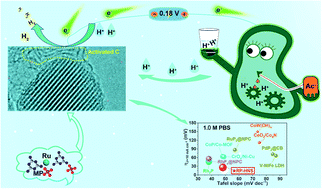Beyond traditional water splitting for energy-efficient waste-to-hydrogen conversion with an inorganic–carbon hybrid nanosheet electrocatalyst†
Abstract
Here, we reported an inorganic–carbon hybrid nanosheet that possesses remarkable hydrogen evolution activity (26 mV@10 mA cm−2) in 1.0 M PBS by coupling RuP2 nanoparticles with N,P co-doped carbon (RP-HNS), delivering a decent energy yield of ∼330% and a remarkable overall energy recovery of 81.4% for H2 production in the waste-to-hydrogen conversion system when used as a microbial electrolysis cell cathode.



 Please wait while we load your content...
Please wait while we load your content...